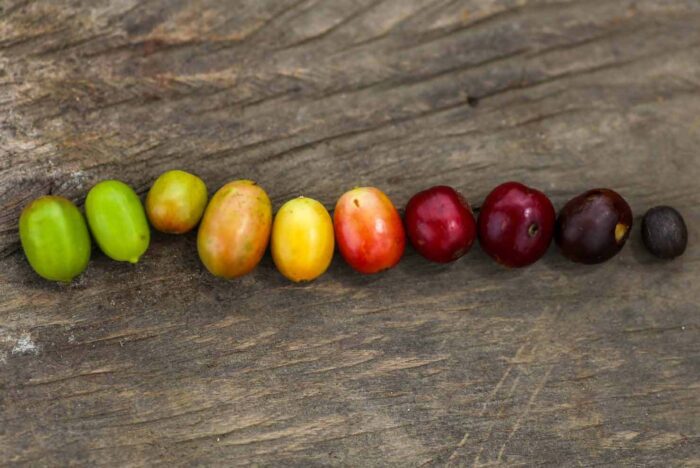Dubai,August 15, 2025 – (Qahwa World) – Unripe coffee cherries, long discarded for their harsh and astringent taste, may now hold hidden value thanks to a breakthrough study from Brazil. Researchers at the Federal University of Uberlândia (UFU) have demonstrated that self-induced anaerobic fermentation (SIAF) can transform immature beans from the Arara cultivar into beverages scoring above 80 points on the Specialty Coffee Association (SCA) scale—the threshold for specialty coffee.
Olgunlaşmamış Kirazların Rolünü Yeniden Düşünmek
Özel kahve sektöründe, yeşilimsi olgunlaşmamış çekirdekler genellikle acı, keskin tatlar ürettikleri için dışlanırlar. UFU ekibi, olgunlaşmamış Arara kirazlarını 200 litrelik hava geçirmez biyoreaktörlerde sıcaklık, pH kontrolü, su içeriği ve maya aşılamasındaki değişikliklerle 96 saate kadar fermente ederek bu varsayıma meydan okudu.
Blind cupping by professional Q-graders revealed that fermented lots containing 13% to 30% unripe cherries not only matched but in some cases outperformed beverages produced solely from ripe cherries. When temperature was carefully controlled at 27 °C, the results were particularly striking, with tasters awarding higher scores than those given to control samples of ripe fruit processed without anaerobic fermentation.
How It Works
The SIAF process places cherries in sealed tanks without oxygen. Naturally occurring microorganisms in the fruit initiate biochemical reactions, releasing carbon dioxide and altering the beans’ chemical profile. These changes reduce the undesirable qualities of immature beans and create new flavor attributes.
The research team also developed a monitoring device to track temperature and pH inside the bioreactors in real time, ensuring precision without disturbing the fermentation process.
Wider Impact for Coffee Growers
Sonuçlar oldukça önemli. UFU denemelerinde hasat edilen kirazların yaklaşık %70'inin olgunlaşmamış olduğu, araştırma grubu tarafından oluşturulan bir yapay zeka aracı kullanılarak tespit edildi. Geleneksel olarak bir kayıp kabul edilen bu kirazlar, artık özellikle tutarsız olgunlaşmanın yüksek kaliteli çekirdek verimini düşürdüğü bölgelerde çiftçiler için potansiyel bir katma değer kaynağıdır.
“Using SIAF with temperature and pH control can minimize the negative effects of immature beans and even elevate the beverage, adding value while still on the farm,” explains Luiza Braga, lead author of the study and a master’s researcher at UFU’s Faculty of Chemical Engineering.
A Collaborative Effort
The project, titled Transforming Challenges into Quality: The Power of Controlled Fermentation in Immature Arara Coffee Beans, was published in Food and Bioprocess Technology. It was supported by FAPESP in partnership with Brazil’s Ministry of Science, Technology, and Innovation (MCTI), with additional funding from FAPEMIG, CAPES, CNPq, and FINEP.
The study forms part of the “Da Semente à Xícara” (Seed to Cup) research group, established in 2019 to advance post-harvest coffee innovations.
What’s Next?
Araştırmacılar, fermente edilmiş olgunlaşmamış kahvedeki olumlu duyusal özelliklerden sorumlu spesifik bileşikleri tanımlamayı ve tekniği diğer Arabica çeşitleri üzerinde test etmeyi amaçlıyor.
If successful, anaerobic fermentation could become a vital tool for producers navigating volatile markets, offering a way to extract more value from every harvest. In a world where coffee demand is rising and prices fluctuate, turning waste into quality may be one of the most promising innovations yet.
The post Anaerobic Fermentation Transforms Unripe Coffee Cherries into Specialty-Grade appeared first on Qahwa World.




